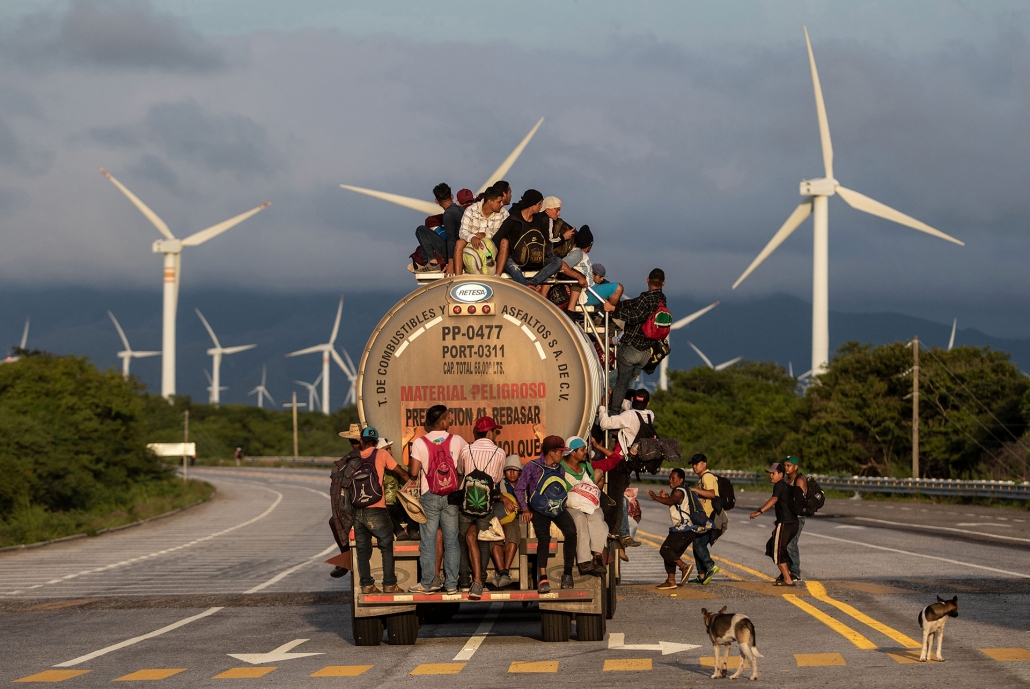CARAVAN
This post is also available in:
 French
French
It’s been a long time since Central American migrants chose to go to the United States, but it’s only starting from 2018, with the arrival of large caravans and the reaction of US President Donald Trump, that this phenomenon attracted attention. The migrants who cross Mexico are exposed to abuse of gangs, smugglers, organized crime and even of authorities throughout their dangerous journey to the American border. For those who fled their country because of extreme violence and poverty, this the journey becomes less dangerous when they move in large groups. At the beginning of October 2018, a few hundred Hondurans set off for the north after a call launched on social networks. On their arrival at the border between Guatemala and Mexico, there were several thousand, mainly from Honduras and some from El Salvador and Guatemala. After some clashes with Guatemalan and later Mexican authorities on the border, they continued on their way, and by the time they reached the center of Mexico, two other caravans were already formed in Central America to undertake the same journey.
The first caravan arrived in Tijuana, on the border between Mexico and the United States, during the second week of November, and at the end of the month, according to the local authorities, more than 7,000 migrants were in shelters in Tijuana. They quickly realized that the American border guards would not give them the welcome they hoped for. On November 25, nearly 500 migrants rushed to different crossing points and were repelled with tear gas by US agents. Some of them managed to cross the border but were quickly arrested. After this incident, President Trump intensified his anti-immigration rhetoric and US authorities tightened border controls while Mexico increased surveillance of migrants in Tijuana. This situation became more aggravated by long delays in processing asylum applications which encouraged migrant groups to try to rush into breaches of the fence in order to cross the border into the Tijuana-San Diego area. The asylum procedure was faster for those who passed illegally and then went to the border guards than for those who were waiting for an interview with US immigration officials at the official crossing points. By the end of December 2018, most members of the October caravan reached the United States in one way or another. However, during New Year’s Eve, still in the Tijuana-San Diego area, a new group of migrants tried to break through the barrier. About 200 migrants were repelled by tear gas from the border guards. Some of them managed to pass but were arrested soon after. In response, the authorities strengthened both the fence and the security measures. From then on, the caravans of Central American migrants headed for the east where there was no barrier and where it was possible to cross the river up to the United States to get to the authorities. This year, the caravans were not as big as in 2018; however, many migrants still continue travelling in large groups. And while Mexico is muscling its migration policy and President Trump is keeping up the pressure, the caravans of any size are still the least dangerous way to cross Mexico. This phenomenon has permanently changed the migratory dynamics in this part of the world.
From 31/08/2019 to 15/09/2019
VISA POUR L'IMAGE - Couvent des Minimes
24, rue Rabelais
66000 PERPIGNAN
France
Opening hours : Every day from 10h to 20h
Phone : 01 42 33 93 18
visapourlimage@2e-bureau.com
www.visapourlimage.com



